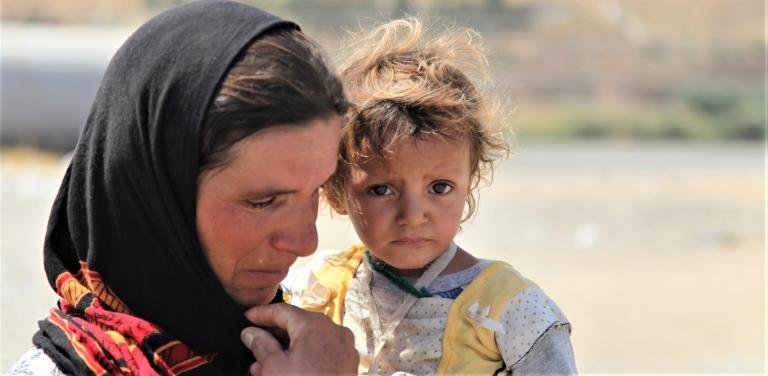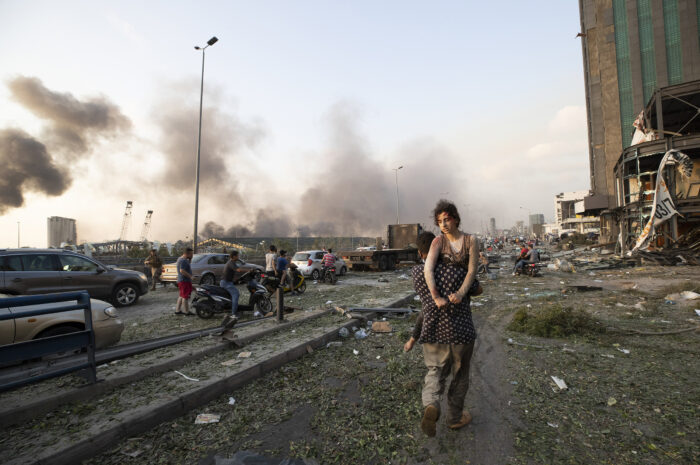
NOTE: This article was originally published in the Jerusalem Post opinion section.
Yazidis are no strangers to tragedy.
The history of the Yazidi people of Iraq is littered with examples of persecution at the hands of tyrannical empires, regimes and groups. Each has sought to annihilate the identity of this small Kurdish religious community living in the Middle East. The Yazidi people have marked every attempt as a firman (originally meaning “decree,” but now used for “genocide”).
Seventy-four firmans have been recorded in the Yazidis’ history, the most horrific of which occurred in recent times at the hands of the Islamic State in Iraq. Leading to mass displacement, disappearances and genocide, it was followed by less numerous attacks by Turkish-backed Salafi jihadi forces in the formerly peaceful Syrian Kurdish enclave of Afrin in January 2018.
In late 2014, after the conquest of much of Iraq by ISIS, the Yazidi people of the Nineveh Plains in the country’s northwest became the targets of an ethnic-cleansing campaign. Motivated by religious decree, ISIS swept across Nineveh’s Sinjar region and rounded up Yazidi males in surrounding villages such as Kocho. After demanding that these individuals convert to Islam, the invaders took those who refused to open graves where they were shot. (More than 200 mass graves were reported to be found in Iraq, with 90 found in Nineveh alone, each holding between 6,000-10,000 corpses according to the United Nation’s Assistance Mission in Iraq report.) The women and children were taken to be sold into sexual slavery on the Islamic State’s black-market. The survivors of these atrocities continue to suffer physical and psychological trauma.

Source: UNICEF
More than 2,000 Yazidis perished in the Sinjar genocide, with another 6,000-plus kidnapped and forced into slavery, according to the journal PLOS Medicine. Subjected to the worst forms of torture and abuse, Yazidis who were traded among Islamic State fighters developed psychological trauma, such as post-traumatic stress disorder (PTSD). Yazidis as young as nine now show signs of psychological trauma from the abuse they endured while in captivity. A 16-year-old Yazidi girl by the name of Shahd Khodr Mirza who spent three years as a slave under the Islamic State, died of a cardiac arrest in early 2018 due to trauma from years of rape. Mirza’s case is only one of many examples of the impact of ISIS on Yazidis.
Selling Yazidis through social media applications such as WhatsApp and Telegram, ISIS constructed an intricate black market for their war-supporting business. They placed their victims on a price list that allocated different prices for different age brackets, marital status and so on, estimating their value between $200 and $1500, according to the UN Human Rights Council. The age of those sold ranged from one to 70. The online journal BMC Medicine conducted an important study in 2018 on Yazidis who were formerly held captive by Islamic State fighters. It found that over 80% of Yazidi women and girls suffer some form of psychological trauma, predominantly PTSD – a troubling percentage that should raise concerns.
The collapse of the Islamic State’s territorial proto-state in Iraq and Syria due to the concerted effort of Iraqi Security Forces, Syrian Democratic Forces and the Coalition against ISIS, has left in its wake widespread devastation to the infrastructure of these nations. With more than 100,000 buildings destroyed in the campaign to liberate cities from ISIS control, former residents struggle. The damage includes Yazidi homes destroyed in campaigns to retake cities like Sinjar City and elsewhere. Thousands sought refuge in camps like Baharka in Erbil, in the Kurdistan region of northern Iraq.
The Sinjar genocide led to the displacement of thousands of Yazidis who now live in camps for internally displaced people (IDPs) in Iraq, as well as refugee camps in neighboring Syria and Turkey. Refugee and IDP camps in Iraq are overcrowded and underfunded, according to the UN refugee agency. The underfunding impacts the level of care these individuals receive for such things as sanitation and electricity. Diseases, organ trafficking and other negatives thrive in these areas where displaced Yazidis live. The number of displaced people within Iraq has only increased over the last four years and that number does not look to be decreasing.

Source: AFP
The Yazidi community in Nineveh is not the only victim of violence in the region. In Syria’s northwest, the Yazidi community in Afrin, which had occupied the region for centuries, was displaced by Turkey’s January incursion into the region during Operation Olive Branch. Among an estimated 100,000 civilians, some 6,000 Yazidis were forced into refugee camps in neighboring areas, such as Shahba. Targeted for both their ethnicity and religion, the Yazidis of Afrin who reside in these refugee camps fear they will be unable to return to their homes, and will remain part of the widespread campaign against Yazidis across the Middle East.
The estimated cost for a complete restoration of Iraq’s infrastructure, according to the Iraqi government’s planning minister Salman Aljumaili, is $88.2 billion. This number overshadows the current figure of $1.17 billion that the United Nations Development Program (UNDP) for Iraq receives for restabilization efforts. In Western Nineveh alone, which encompasses regions such as Sinjar and Tal Afar, the estimated cost required for development projects is $47 million. Over 90% of the projects for this region are underfunded, according to UNDP’s Funding Facility for Stabilization Quarterly Progress Report for 2018. International funding is required to boost this figure in the long run.
International efforts to raise awareness of the plight of the Yazidis and funding for the victims of the Islamic State are facing many challenges. Nadia Murad – a former victim of the ISIS slavery system – travels frequently to meet with leaders across the globe to bring attention to Sinjar and victims of sexual violence. Through Nadia’s initiative, funds are being gathered to support the restoration of Sinjar and help victims of Islamic State brutality. However, despite her activism, the funds required are slow to materialize. There are simply not enough nations contributing to the post-Islamic State restabilization and rebuilding of Iraq.
The breakup of the Yazidi community in Nineveh by ISIS shattered families. There are still husband-less wives, children without parents, and hundreds without their loved ones. Some 3,000 Yazidis remain missing across Iraq and Syria. And while the campaign to eliminate the Islamic State’s proto-state reaches its end, there remain questions over what happens next for the Yazidis, including for those thousands displaced and living in refugee camps. How the victims of ISIS will be rehabilitated and how Yazidis will be protected from future harm also require urgent attention.
The plight of the Yazidis must not be forgotten. Many Yazidis feel that the world has abandoned them to suffer alone. These people require support and assistance to rescue them from their tragic situation. Funds for rebuilding destroyed homes, hospitals, schools and other public facilities, plus medical assistance and humanitarian aid, are required. Without these necessities, life will continue to be bitterly hard for the Yazidis. And those Yazidis seeking asylum should be welcomed by those Western nations that created Iraq in the 1920s with apparent disregard for the needs of the indigenous peoples of the region.
It is the least they can do to help these victims of religious fanaticism and opportunistic policies.
Written by Anthony Avice Du Buisson (21/01/2019)



![A symphony of violence in Afghanistan [Medium Article]](https://philosophyismagic.com/wp-content/uploads/2021/08/1_bVzly9TuDCRBZ9aIV5GqnQ-700x465.jpeg)
